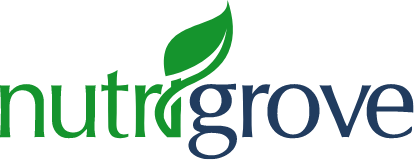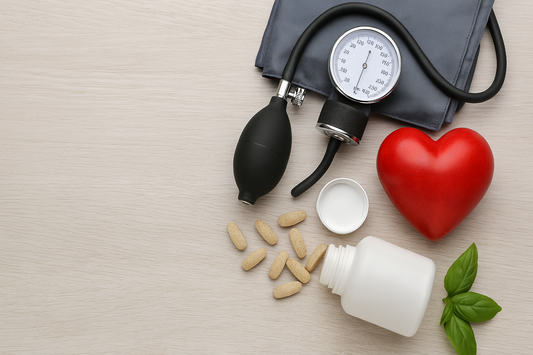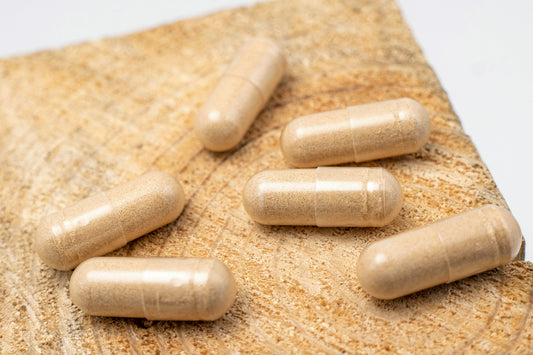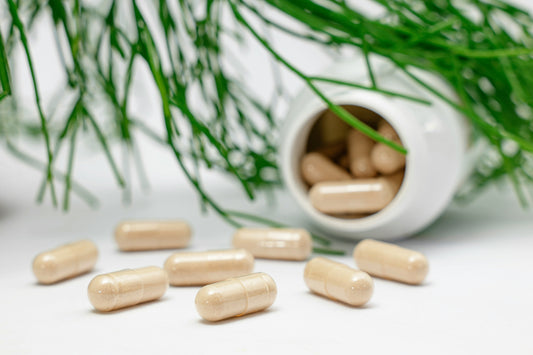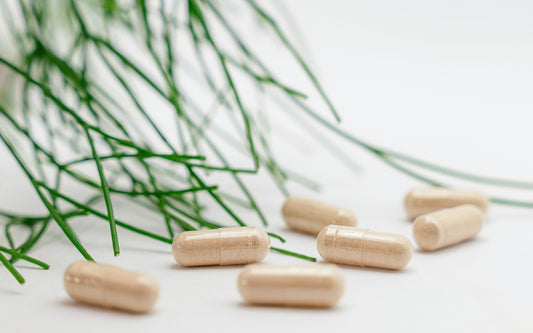What are the warning signs 7 days before a stroke
Recognizing the warning signs that may occur 7 days before a stroke is crucial for early detection and prompt medical intervention. These warning signs can help individuals take immediate action and seek medical attention to prevent the onset of a stroke and minimize its potential impact.
- Severe or unusual headaches can be a warning sign of an impending stroke.
- Transient Ischemic Attacks (TIAs) are temporary episodes that resemble stroke symptoms and require urgent medical attention.
- Other general warning signs of a stroke include weakness or numbness on one side of the body, difficulty speaking or understanding, vision problems, dizziness, and unexplained severe headaches.
- Acting FAST - Face drooping, Arm weakness, Speech difficulty, Time to call 911 - is crucial when recognizing stroke warning signs.
- Preventive measures such as managing blood pressure, cholesterol, and blood sugar, quitting smoking, maintaining regular exercise, and following a healthy diet can significantly reduce the risk of stroke.
Understanding Ischemic Stroke and Headache Warning Signs
Ischemic stroke, the most common type of stroke, can be preceded by severe or unusual headaches. These headaches may serve as warning signs of an impending stroke and should not be ignored. Recognizing the connection between headaches and ischemic stroke is crucial for early detection and prompt medical attention.
According to medical experts, severe headaches can occur as a result of decreased blood flow to the brain, which is a characteristic of ischemic stroke. If you experience a sudden, intense headache that is unlike any you have previously had, it is important to take it seriously and seek medical advice. Ignoring or dismissing such a symptom can lead to delayed treatment and potentially devastating consequences.
Awareness of headache warning signs and their association with ischemic stroke can save lives. By staying vigilant and promptly reporting any severe or unusual headaches to a healthcare professional, individuals can increase their chances of receiving timely intervention and prevent further damage caused by a stroke.
Recognizing Transient Ischemic Attacks (TIA)
A transient ischemic attack (TIA) can cause similar symptoms to a stroke but usually resolve within a short period of time. These attacks are often referred to as "ministrokes" because they mimic the symptoms of a stroke but do not result in permanent damage to the brain. While TIAs may seem less severe, they should not be ignored, as they can be a warning sign of an impending stroke.
During a TIA, blood flow to the brain is temporarily disrupted, leading to symptoms such as weakness or numbness on one side of the body, difficulty speaking or understanding, vision problems, and dizziness. These symptoms can be frightening and alarming, but they typically resolve within a few minutes to an hour.
It's crucial to seek immediate medical attention if you experience symptoms of a TIA, as it can help prevent a full-blown stroke from occurring. Your healthcare provider will evaluate your condition, conduct diagnostic tests, and develop a plan to reduce your risk of future TIAs or strokes. Remember, recognizing the warning signs and acting promptly can make a significant difference in your health and well-being.
| TIA Symptoms | Stroke Symptoms |
|---|---|
| Weakness or numbness on one side of the body | Weakness or paralysis on one side of the body |
| Trouble speaking or understanding | Difficulty speaking or understanding |
| Vision problems | Blurred or blackened vision, double vision |
| Dizziness | Dizziness, loss of balance or coordination |
| Severe headaches with no known cause | Severe headaches, often accompanied by nausea or vomiting |
Remember, if you experience any of these symptoms, it's important to act FAST (Face drooping, Arm weakness, Speech difficulty, Time to call 911) and dial emergency services immediately. Do not ignore these warning signs, as prompt medical attention can save lives and prevent long-term disability. By recognizing the signs of a TIA and taking preventive measures, such as managing your blood pressure, cholesterol, and blood sugar levels, you can reduce your risk of experiencing a stroke and maintain a healthy lifestyle.
In addition to specific warning signs, there are general symptoms that may indicate an impending stroke. It is crucial to be aware of these symptoms and seek medical attention promptly. Some of the common general warning signs of a stroke include:
- Weakness or numbness on one side of the body, which may affect the face, arm, or leg.
- Trouble speaking or understanding words or sentences. The person may have difficulty finding the right words or may slur their speech.
- Vision problems, such as blurriness, double vision, or sudden loss of vision in one or both eyes.
- Dizziness or loss of balance and coordination. The person may feel unsteady or have difficulty walking.
- Severe headaches with no known cause. These headaches may be sudden and intense, often described as "the worst headache of my life."
If you or someone around you experiences any of these warning signs, it is important to act FAST. Remember the acronym:
Face drooping: Is one side of the face drooping or numb?
Arm weakness: Is one arm weak or numb? Ask the person to raise both arms. Does one arm drift downward?
Speech difficulty: Is speech slurred or hard to understand? Ask the person to repeat a simple sentence.
Time to call 911: If you observe any of these symptoms, call emergency services immediately.
Taking preventive measures can also help reduce the risk of stroke. It is important to maintain healthy blood pressure, cholesterol, and blood sugar levels. Quitting smoking, engaging in regular exercise, and following a healthy diet can further decrease the chances of experiencing a stroke.
| Symptom | Description |
|---|---|
| Weakness or numbness | One-sided weakness or numbness in the face, arm, or leg. |
| Trouble speaking or understanding | Difficulty speaking or understanding words or sentences. |
| Vision problems | Blurriness, double vision, or sudden loss of vision in one or both eyes. |
| Dizziness | Feeling unsteady or having difficulty with balance and coordination. |
| Severe headaches | Sudden and intense headaches with no known cause. |
Recognizing these warning signs, acting promptly, and prioritizing preventive measures can make a significant difference in reducing the risk of stroke. Stay informed, take care of your health, and seek medical attention if you observe any symptoms associated with stroke.
Acting FAST can save lives during a stroke emergency - it's essential to call 911 without delay. Recognizing the warning signs and taking immediate action can make a crucial difference in the outcome for someone experiencing a stroke.
When a stroke occurs, every second matters. Time is of the essence, as the longer a stroke goes untreated, the greater the risk of permanent damage to the brain. That's why it's crucial to act quickly and dial emergency services right away.
The FAST acronym can help individuals identify the most common warning signs of a stroke and take appropriate action. Here's what it stands for:
- Face drooping: Is one side of the person's face drooping or feeling numb? Ask them to smile and see if their smile is uneven.
- Arm weakness: Is the person experiencing sudden weakness or numbness in one arm? Ask them to lift both arms and see if one of the arms drifts downward.
- Speech difficulty: Is the person having trouble speaking or slurring their words? Ask them to repeat a simple sentence and see if their speech is coherent.
- Time to call 911: If any of these symptoms are present, it's time to call emergency services immediately.
Remember, acting FAST can help save lives. By recognizing these warning signs and calling for help, you could be providing someone with the opportunity for prompt medical attention and potentially preventing long-term disabilities.
| Warning signs | Action |
|---|---|
| Face drooping, arm weakness, or speech difficulty | Call 911 |
| Severe or unusual headache | Seek immediate medical attention |
| Weakening or numbness on one side of the body, trouble speaking or understanding, vision problems, dizziness | Call 911 |
| Recognize transient ischemic attacks (TIAs) | Seek immediate medical attention |
Remember, stroke is a medical emergency. Immediate action is crucial for the best possible outcome. Don't hesitate to call 911 if you notice any signs or symptoms of a stroke.
Taking Preventive Measures
Leading a healthy lifestyle and taking preventive measures can significantly reduce the risk of stroke. By making simple changes to daily habits and incorporating healthy choices, individuals can take control of their health and lower their chances of experiencing a stroke.
One important preventive measure is maintaining optimal blood pressure levels. High blood pressure is a leading risk factor for stroke, so it's crucial to monitor blood pressure regularly and consult a healthcare professional for guidance on managing it effectively. Additionally, keeping cholesterol and blood sugar within a healthy range can further reduce the risk of stroke.
Another vital aspect of stroke prevention is adopting a healthy diet and exercise regimen. A diet rich in fruits, vegetables, whole grains, and lean proteins provides the necessary nutrients for overall health and lowers the risk of stroke. Regular physical activity, such as brisk walking, swimming, or cycling, promotes cardiovascular fitness and helps maintain a healthy body weight.
| Preventive Measures | Benefits |
|---|---|
| Eating a balanced diet | Provides essential nutrients and lowers stroke risk |
| Exercising regularly | Improves cardiovascular health and helps maintain a healthy weight |
| Quitting smoking | Reduces the risk of stroke and improves overall lung health |
| Maintaining a healthy weight | Lowers the risk of numerous health conditions, including stroke |
By incorporating these preventive measures into daily life, individuals can actively reduce their stroke risk and promote overall well-being. It's important to remember that even small changes can make a significant difference, and prioritizing health should always be a top priority.

Incorporating NutriGrove Blood Pressure Supplement into your daily routine can be an effective way to lower blood pressure and reduce the risk of stroke. High blood pressure is a major risk factor for strokes, and managing it is crucial for maintaining a healthy cardiovascular system. NutriGrove Blood Pressure Supplement is specially formulated with natural ingredients that have been scientifically proven to support heart health and promote healthy blood pressure levels.
The key ingredients in NutriGrove Blood Pressure Supplement include Hawthorn Berry Extract, Olive Leaf Extract, and Garlic Extract. These ingredients have long been used in traditional medicine for their beneficial effects on blood pressure regulation. Hawthorn Berry Extract has been shown to improve blood flow and reduce blood pressure levels, while Olive Leaf Extract has antioxidant properties that protect against damage caused by free radicals. Garlic Extract helps promote blood vessel relaxation and improve blood circulation.
By taking NutriGrove Blood Pressure Supplement as part of your daily routine, you can support your cardiovascular health and reduce the risk of stroke. It is important to note that while NutriGrove Blood Pressure Supplement can be a valuable addition to a healthy lifestyle, it should not be used as a replacement for prescribed medications or medical advice. Always consult with your healthcare professional before starting any new supplement regimen.
In conclusion, incorporating NutriGrove Blood Pressure Supplement into your daily routine can be a proactive step towards maintaining healthy blood pressure levels and reducing the risk of stroke. Along with regular exercise, a balanced diet, and medical guidance, this natural supplement can support your overall cardiovascular health. Take control of your well-being and prioritize your heart health with NutriGrove Blood Pressure Supplement.
Staying Informed and Safe
Staying informed about stroke warning signs is essential for recognizing symptoms early and taking appropriate action. By understanding the potential warning signs that may occur 7 days before a stroke, individuals can be better prepared to seek immediate medical attention if necessary.
One important warning sign to be aware of is a severe or unusual headache. It's important to note that not all headaches are related to strokes, but if you experience a headache that is more intense than usual or different in any way, it's crucial to pay attention to this potential warning sign. According to medical professionals, severe headaches can sometimes be a precursor to an ischemic stroke. In fact, some studies have shown that migraines, especially those with aura, can increase the risk of stroke. Therefore, it is important to seek medical advice if you experience such headaches.
"Headaches, especially those that are severe or unusual, should never be ignored," says Dr. Smith, a neurologist.
"These headaches can sometimes be a warning sign that something more serious is happening in the brain. Seeking medical advice is always the best course of action."
In addition to severe headaches, transient ischemic attacks (TIAs) are also important warning signs to be aware of. TIAs are sometimes referred to as "ministrokes" because they produce similar symptoms to a stroke, such as weakness or numbness on one side of the body, trouble speaking or understanding, vision problems, dizziness, and severe headaches with no known cause. However, unlike a stroke, TIAs are temporary and resolve within a short period of time. Nevertheless, they should never be ignored, as they may still indicate an increased risk of a full-blown stroke in the future.
Recognizing these warning signs and understanding their significance is only the first step. In an emergency situation, acting FAST is crucial. FAST stands for:
- Face drooping: Is one side of the face drooping or numb?
- Arm weakness: Is one arm weak or numb?
- Speech difficulty: Is speech slurred or garbled?
- Time to call 911: If you observe any of these symptoms, it is important to call emergency services immediately.
While it's essential to stay informed and recognize the warning signs, taking preventive measures is equally important in reducing the risk of stroke. This includes maintaining blood pressure, cholesterol, and blood sugar within a healthy range, quitting smoking, exercising regularly, and following a healthy diet. By adopting a healthy lifestyle and incorporating these preventive measures, individuals can significantly reduce their risk of experiencing a stroke.
Remember, prevention is always better than cure. By staying informed about stroke warning signs, taking appropriate preventive measures, and seeking immediate medical attention when necessary, individuals can prioritize their health and ensure their well-being. Stay informed, stay safe!
Seeking Medical Attention
If you experience any warning signs of a stroke, it is crucial to seek immediate medical attention to receive the necessary care. Time is of the essence when it comes to treating a stroke, as prompt intervention can significantly improve the chances of recovery and minimize potential complications.
When you notice any symptoms that may indicate a stroke, do not delay in contacting a healthcare professional or calling emergency services. Fast action can mean the difference between life and death or lasting damage.
Seeking medical attention promptly allows healthcare professionals to evaluate your symptoms, make an accurate diagnosis, and provide appropriate treatment. They will conduct a thorough examination, which may include imaging tests, blood work, and other assessments to determine the cause and extent of the stroke.
Remember, the sooner you seek medical help, the better your chances of receiving the necessary care and potentially preventing further damage. Do not hesitate to reach out for assistance if you or someone around you displays any warning signs associated with a stroke. Your health and well-being depend on it.
Conclusion
Being aware of stroke warning signs, taking preventive measures, and seeking prompt medical attention can make a significant difference in reducing the risk of stroke and ensuring early intervention. It is crucial to recognize potential warning signs that may occur 7 days before a stroke, such as severe or unusual headaches, which could be a precursor to an ischemic stroke. Additionally, transient ischemic attacks (TIA), also known as "ministrokes," can present similar symptoms to a stroke but resolve within a short period of time. Seeking immediate medical attention if these symptoms occur is essential.
Other general warning signs of a stroke include weakness or numbness on one side of the body, trouble speaking or understanding, vision problems, dizziness, and severe headaches with no known cause. Acting FAST (Face drooping, Arm weakness, Speech difficulty, Time to call 911) and calling emergency services if any of these symptoms are observed can significantly improve outcomes.
Taking preventive measures is key in reducing the risk of stroke. This includes maintaining blood pressure, cholesterol, and blood sugar within a healthy range, quitting smoking, exercising regularly, and following a healthy diet. By adopting a healthy lifestyle, individuals can actively work towards reducing their chances of experiencing a stroke.
By staying informed about stroke warning signs and actively prioritizing their health, individuals can take control of their well-being and minimize the impact of stroke. It is crucial to seek immediate medical attention if any stroke warning signs are observed. Consulting with a healthcare professional and receiving a proper diagnosis is essential for timely intervention and the best possible outcomes.
FAQ
What are the warning signs 7 days before a stroke?
Potential warning signs that may occur 7 days before a stroke include severe or unusual headaches, transient ischemic attacks (TIAs), weakness or numbness on one side of the body, trouble speaking or understanding, vision problems, dizziness, and severe headaches with no known cause.
What is the connection between ischemic stroke and headaches?
Severe or unusual headaches can be a warning sign of an ischemic stroke. If you experience such headaches, it is important to seek medical attention immediately.
What are transient ischemic attacks (TIAs)?
Transient ischemic attacks, also known as "ministrokes," are temporary events that mimic stroke symptoms but resolve within a short period of time. If you experience symptoms similar to a stroke that quickly go away, it is still essential to consult a healthcare professional.
What are the general warning signs of a stroke?
The general warning signs of a stroke include weakness or numbness on one side of the body, trouble speaking or understanding, vision problems, dizziness, and severe headaches with no known cause. It is crucial to act FAST and call emergency services if any of these symptoms are observed.
Why is it important to act FAST?
Acting FAST (Face drooping, Arm weakness, Speech difficulty, Time to call 911) is crucial when responding to stroke warning signs. Prompt action can help save a life and minimize the potential damage caused by a stroke. If you observe any of the key symptoms, call emergency services immediately.
How can I reduce my risk of stroke?
Taking preventive measures can help reduce the risk of stroke. Some steps you can take include maintaining blood pressure, cholesterol, and blood sugar within a healthy range, quitting smoking, exercising regularly, and following a healthy diet.
What is NutriGrove Blood Pressure Supplement?
NutriGrove Blood Pressure Supplement is a natural supplement that can be added to your daily routine to help lower blood pressure. It is one possible solution for managing blood pressure as part of stroke prevention.
How can I stay informed and safe regarding stroke warning signs?
Staying informed about stroke warning signs is crucial for early detection and prompt medical attention. Recognizing the symptoms and taking necessary precautions can help protect your health. Stay informed, prioritize your well-being, and seek medical advice if needed.
When should I seek medical attention if I suspect a stroke?
If you suspect a stroke or observe any warning signs, it is important to seek immediate medical attention. Contact your healthcare professional or call emergency services to ensure a proper diagnosis and appropriate treatment.
What is the conclusion of recognizing stroke warning signs?
In conclusion, recognizing stroke warning signs is crucial for early detection and treatment. By taking preventive measures, seeking medical attention, and prioritizing your health, you can reduce the risk of stroke and effectively manage your well-being.
